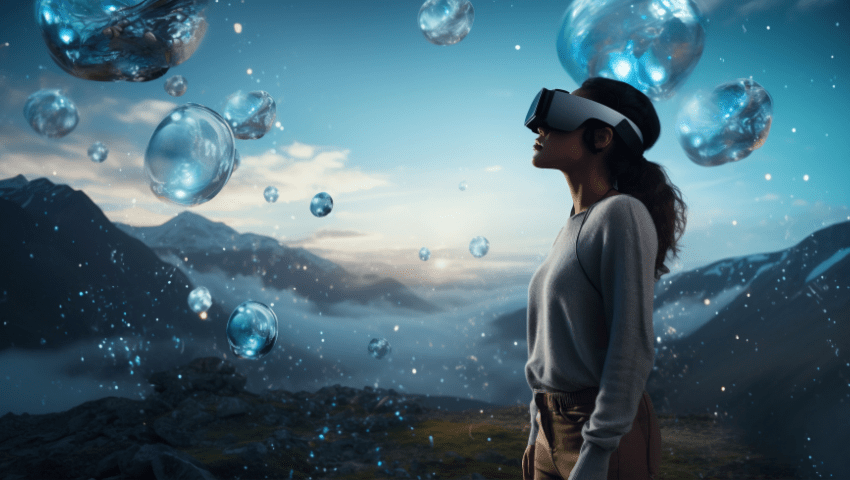Mixed Reality (MR) is an advanced technology that blends the physical and digital worlds, creating an interactive environment where real and virtual objects coexist and interact in real-time. MR is considered the next step in the evolution of immersive technologies, bridging the gap between Augmented Reality (AR) and Virtual Reality (VR).
“MR operates by combining hardware and software to merge real-world elements with virtual components.”
- Hardware:
- MR Devices: Specialized devices like the Microsoft HoloLens, Magic Leap, or mixed-reality headsets are designed for MR experiences. These devices often include see-through lenses or advanced displays.
- Sensors and Cameras: These capture the physical environment and detect objects, surfaces, and user movements.
- Processors: Powerful processors analyze input data to render interactive digital elements in real time.
- Software:
- Spatial Mapping: MR applications map the real-world environment to identify surfaces, spaces, and objects.
- Artificial Intelligence (AI): AI enhances MR by recognizing objects, voices, and gestures, enabling smarter interactions.
Key Features of Mixed Reality
- Interactive Experiences: MR allows users to manipulate both virtual and physical objects in the same environment.
- Spatial Awareness: Devices understand and respond to the layout and objects in the real world.
- Seamless Integration: MR merges the digital and real worlds without isolating the user from their physical surroundings.
Applications of Mixed Reality
Mixed Reality has transformative applications across various fields:
- Education and Training:
- MR provides immersive learning environments for medical students, engineers, and pilots, allowing them to practice in realistic scenarios.
- Historical recreations or virtual laboratories bring lessons to life.
- Healthcare:
- Surgeons use MR to overlay digital information during operations, improving precision.
- Physical therapy incorporates MR exercises tailored to patients’ movements.
- Entertainment and Gaming:
- MR creates interactive gaming experiences where players interact with virtual characters and environments in their physical space.
- It’s also used in immersive storytelling and live performances.
- Manufacturing and Design:
- Engineers and designers visualize prototypes in real-world settings, making adjustments in real time.
- MR enhances collaboration by enabling teams to work on shared 3D models remotely.
- Retail and Shopping:
- Virtual try-ons for clothing, accessories, or furniture placement improve the shopping experience.
- Architecture and Real Estate:
- Architects use MR to present building designs, allowing clients to walk through virtual models in physical spaces.
Benefits of Mixed Reality
- Enhanced Collaboration: Teams can collaborate more effectively by interacting with the same virtual objects in shared spaces.
- Improved Decision-Making: MR helps users visualize outcomes and make more informed choices.
- Increased Productivity: MR streamlines processes like training, design, and troubleshooting.
Challenges of Mixed Reality
- High Costs: MR hardware and software development can be expensive, limiting accessibility for smaller businesses.
- Technical Complexity: Creating and implementing MR applications requires advanced expertise.
- Hardware Limitations: Current MR devices can be bulky, and battery life may be limited.
The Future of Mixed Reality
Mixed Reality is poised to redefine how we interact with technology. Key advancements to watch for include:
- Lighter and More Affordable Devices: Future MR hardware is expected to become more compact and cost-effective.
- Integration with AI and IoT: Combining MR with artificial intelligence and the Internet of Things (IoT) will enable smarter, more connected experiences.
- Expanded Use Cases: MR will likely play a larger role in remote work, telemedicine, and virtual tourism.
Conclusion
Mixed Reality represents a transformative step forward in how we interact with technology, blending the real and virtual worlds to create powerful, interactive experiences. Its applications across industries are vast, and as the technology continues to evolve, it holds the potential to change how we work, learn, and play.

